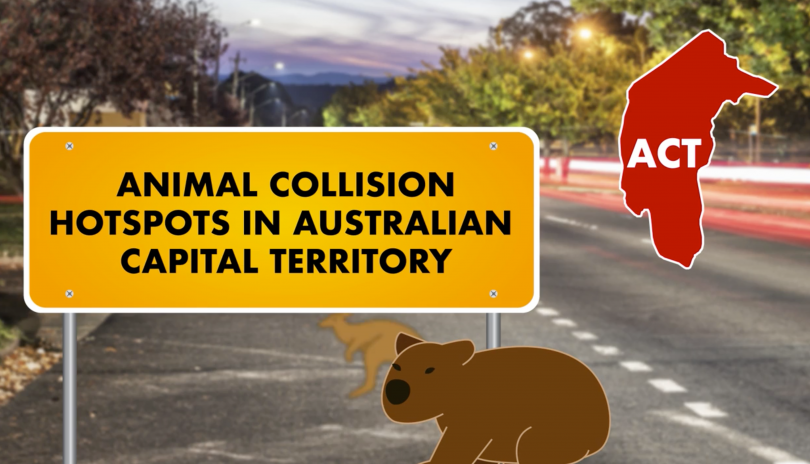
Canberra has been named Australia’s roadkill capital for the third year in a row. Pictured is a kangaroo crossing the road near Tidbinbilla Nature Reserve. Photo: Glynis Quinlan.
For the third year in a row, Canberra has the unwelcome distinction of being named the animal collision capital of Australia – recording more collisions between motorists and animals than any other Australian city.
According to the latest data from car insurer AAMI, the central area of the city – which includes Majura, Fyshwick and bushland near Mount Ainslie -recorded the highest number of animal collisions in the ACT.
Kambah was the ACT’s second-biggest animal collision hotspot, followed by Hume, Tuggeranong and Belconnen.
The animal collision rankings are based on data from more than 9,000 animal collisions claims lodged with AAMI between March last year and February this year. A total of 698 claims were lodged in the same time period in the ACT.
Wallan, Heathcote and Gisborne in Victoria have claimed the second, third and fourth placings in terms of Australia’s animal collision hotspots, while Canberra’s near neighbour Goulburn has taken out fifth place. For Goulburn, this represents an improvement as it came in second last year.
Perhaps not surprisingly, kangaroos were involved in the vast majority of ACT animal collisions – 96 per cent.
Wombats were involved in one per cent of collisions and wallabies were involved in another one per cent. Collisions with dogs or foxes made up most of the remaining two per cent.

Canberra is Australia’s roadkill capital. Image supplied.
AAMI spokesperson Ashleigh Paterson said the AAMI data also revealed that the ACT sees a significant spike in animal collisions in winter – adding that this is a timely reminder for motorists with winter only a couple of days away. She called on drivers to be extra vigilant.
“As the days shorten, motorists are sharing the road with animals for longer periods of time as they are most active during dawn and dusk,” Ms Paterson said.
“Wildlife is unpredictable, so we encourage drivers to always expect the unexpected on the road, particularly in signposted wildlife areas.
“Simple things such as being aware of your surroundings, driving to the speed limits, and being extra vigilant at dawn and dusk can help keep you and our wildlife safe.”
ACT Wildlife has previously told Region Media that the AAMI data is only the tip of the iceberg in terms of animal carnage in the ACT, with the figures not including incidents where no damage is done to cars.
They said that other animals or birds which are often killed or injured on ACT roads including cockatoos, turtles, magpies, lizards and possums.
AAMI has provided the following tips for sharing the road with animals:
- If you notice roadkill, slow down and pay extra attention because it’s an indicator there is wildlife in the area.
- If you spot a kangaroo crossing the road, it’s a sign more kangaroos will be following as they move in groups.
- If you see an animal on the road, slow down and brake, but avoid swerving so as not to endanger yourself and other drivers on the road.
- If you’re involved in a collision with an animal, stop to check its welfare, but only if it is safe to do so. If the animal is alive and injured call your local wildlife rescue service. (ACT Wildlife can be contacted on 0432 300 033 or by clicking here. For injured kangaroos, call Access Canberra on 13 22 81.)
- If the animal is a dead kangaroo, check if it is a female and if there is a joey(s) in her pouch or around her. Pouches/flaps of wombats and echidnas should also be checked as well as the surrounding area, as young echidnas are often dislodged during a vehicle collision.
- Use your peripheral vision and be aware of your surroundings, especially when travelling through forest or grassland areas where animals are not clearly visible.
Original Article published by Glynis Quinlan on The RiotACT.







